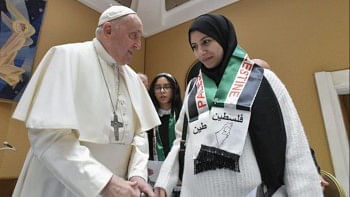Financial success must be accompanied by environmental stewardship and social justice

Many of the investments made in Bangladesh, especially in the manufacturing sector, have contributed to impressive growth in GDP over the last decade, but have presented the threat of locking the country into an unsustainable development path. The tangible ramifications of such environmentally irresponsible investments are evident in air, water and land pollution that is damaging natural ecosystems, eroding biodiversity and widening social inequity. Green finance, which means channeling investment to projects that benefit the environment, is put forward as a tool to internalise environmental externalities and adjust climate change-related risk perceptions to boost green and sustainable economic development. In Bangladesh, even though some policy alignments are evident towards achieving sustainable development goals, there are opportunities for creating an enabling environment for financial institutions, both formal and non-formal, to play a catalytic role in promoting green growth in the present and foreseeable future.
On the domestic front, Bangladesh Bank is leading with initiatives to introduce green finance in the local market, with a clear vision to internalise green banking in the financial sector. It has introduced a host of policy decisions for environmental and social safeguards to be followed by banks and non-bank financial institutions while diversifying refinance among commercial enterprises. Some programmatic efforts with external finance support have also been introduced by the central bank for undertaking interventions that have co-benefits for green growth. Bangladesh Bank mandated the financial institutions under its jurisdiction to set up Sustainable Finance Units (SFU) to achieve more effective green portfolio management.
However, there are a host of challenges that are holding back the initiatives taken by Bangladesh Bank to popularise green debt finance from taking off. These include lack of proper knowledge or attention among the bankers and respective stakeholders, low or insufficient investment demand for green projects, lack of skills in assessing financial implications of environmental risks, high risks associated with funding new green technologies and other untested green ventures refinance to small scale entrepreneurs with no or poor prior credit records.
The concept of sustainable development formed the basis of the United Nations Conference on Environment and Development held in Rio de Janeiro in 1992. There, sustainable development was identified as development that meets the needs of the present, without compromising the ability of future generations to meet their own needs. The concept of sustainable development can be interpreted in many different ways, but at its core is an approach to development that looks to balance different, and often competing, needs against an awareness of the environmental, social and economic limitations we face as a society. Living within our environmental limits is one of the central principles of sustainable development.
Sustainable development is conceived to be anchored on three pillars, which are to evolve concomitantly on sustainable factors—namely, economic, social and environmental; and are to be centred on the human being, implying that the process of sustainable development is necessarily inclusive and should promote unity in cultural and other forms of diversity. But it is essential, in the context of establishing this unity, that diverse cultures, interests and wishes, particularly of the downtrodden and disadvantaged groups, are facilitated to flourish and find proper expressions in appropriate forms. Sustainable development also invokes intra- and intergenerational equity, ie equity among and within nations at present and the management of natural and other resources such that while the present generation meets its needs, the future generations can meet theirs too.
The conventional way to measure the success of a business is the bottom line. But the concept of a Triple Bottom Line, where social and environmental factors are considered along with economic ones, is also getting a lot of attention.
The Triple Bottom Line is a way to think about yourself, your career and your company. The essential challenge it poses to business leaders is to find a way to simultaneously please your investors and think of your grandchildren. Triple Bottom Line thinking holds that a company should combine standard metrics of financial success with those that measure environmental stewardship and social justice. It is sometimes called the 3P approach—people, planet and profits. In each case, it requires thinking in three dimensions, not one.
The Triple Bottom Line isn't new. When John Elkington first mentioned it in the mid 1990s, he also laid the groundwork for defining environmental and social impacts of a company's activities.
Today, quantifiable environmental impacts include consumption of finite resources, water quality and availability, and pollution emitted. Social impacts include community health, worker safety, education quality and diversity.
Bangladesh has achieved significant progress in respect of all three pillars of sustainable development, especially the social front. We are fully committed to pursuing sustainable development, seeking to establish and maintain economic vibrancy, social equity and inclusiveness, human dignity for all, and a healthy environment and a sound natural resource base. However, given its resource limitations, the country needs finance and technology transfer as well as capacity enhancement support, consistent with the properly defined actions that it will take to move steadfastly towards the goal of sustainable development.
Ananta Ahmed is an international green building expert and managing director at 360 Total Solution Limited.

 For all latest news, follow The Daily Star's Google News channel.
For all latest news, follow The Daily Star's Google News channel. 



Comments